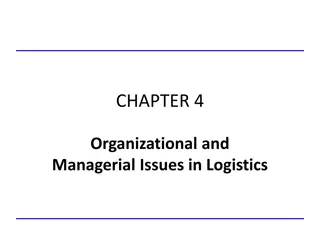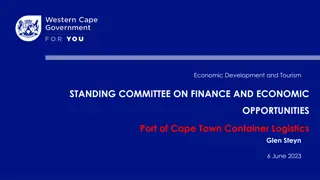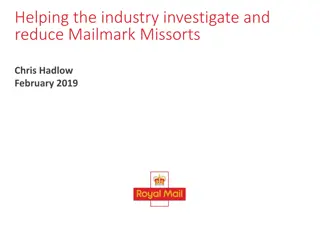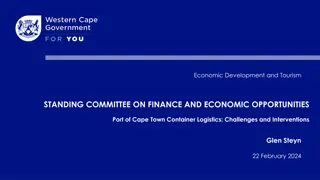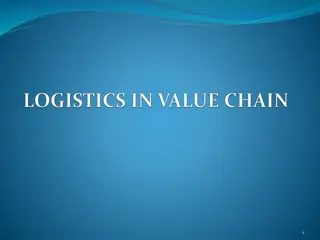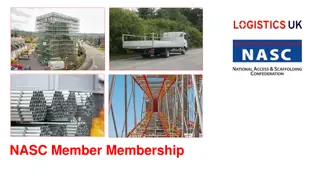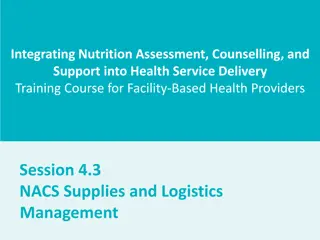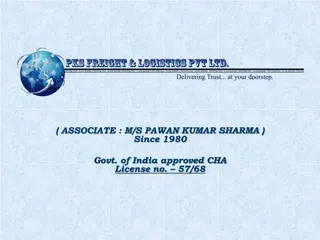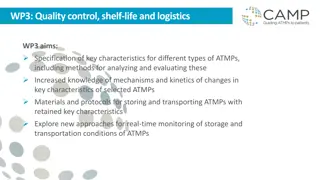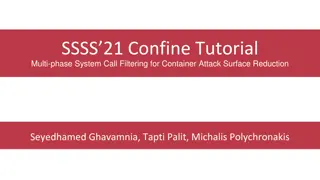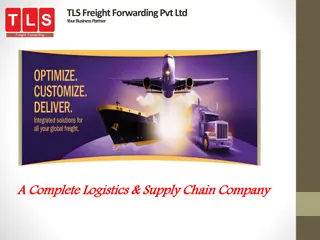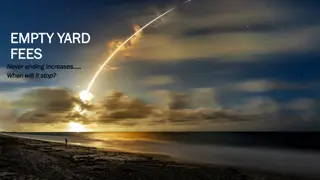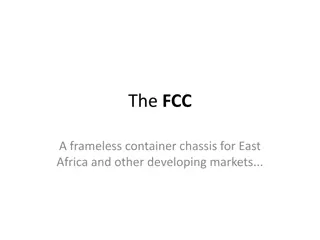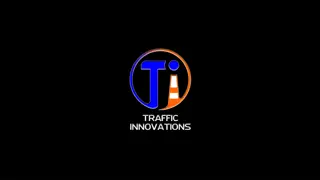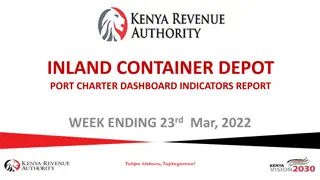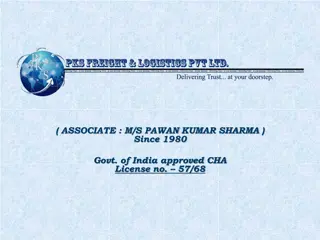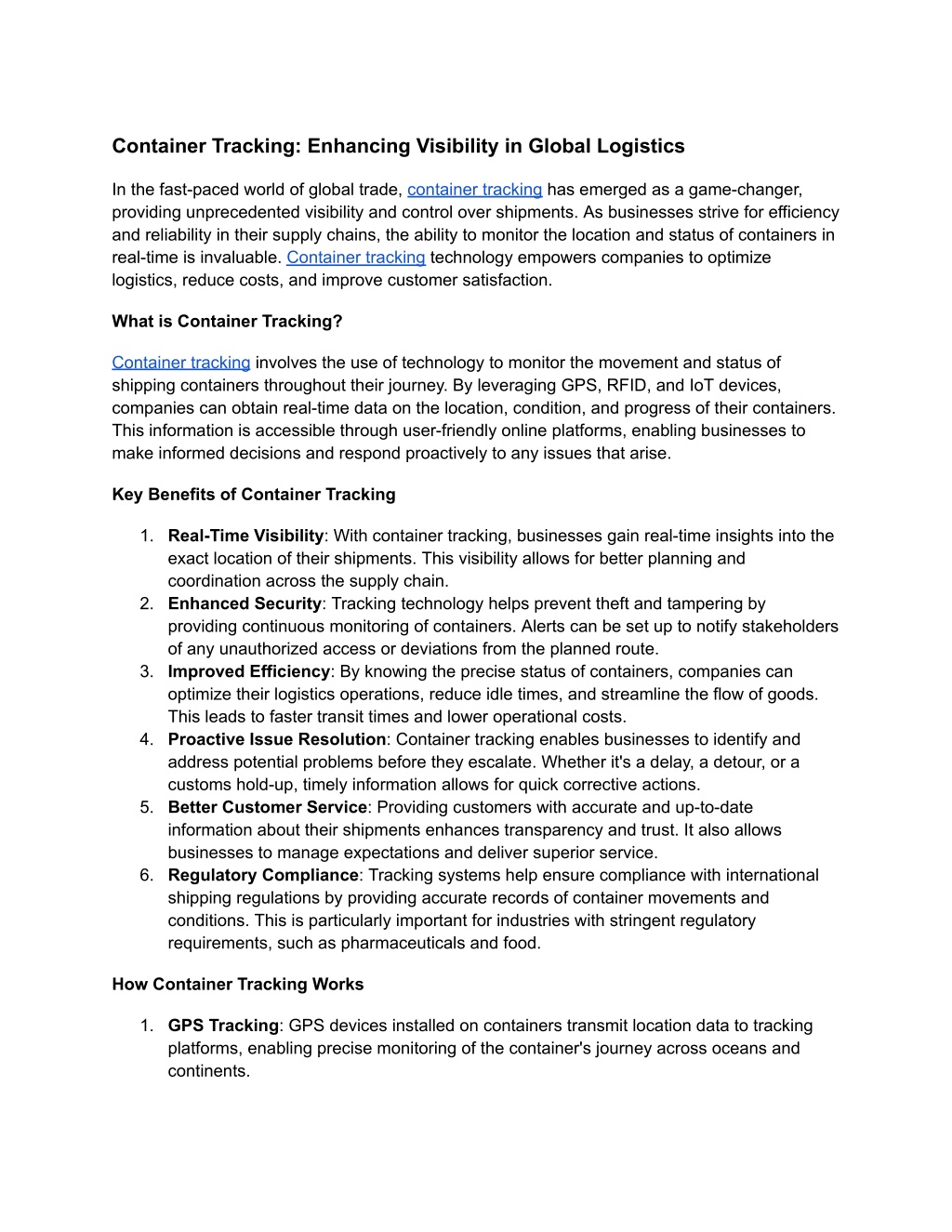
Container Tracking_ Enhancing Visibility in Global Logistics
In the realm of global logistics, container tracking is an essential tool that enhances visibility, security, and efficiency. By providing real-time data on the location and status of shipments, it empowers businesses to optimize their supply chains,
Download Presentation

Please find below an Image/Link to download the presentation.
The content on the website is provided AS IS for your information and personal use only. It may not be sold, licensed, or shared on other websites without obtaining consent from the author. Download presentation by click this link. If you encounter any issues during the download, it is possible that the publisher has removed the file from their server.
E N D
Presentation Transcript
Container Tracking: Enhancing Visibility in Global Logistics In the fast-paced world of global trade, container tracking has emerged as a game-changer, providing unprecedented visibility and control over shipments. As businesses strive for efficiency and reliability in their supply chains, the ability to monitor the location and status of containers in real-time is invaluable. Container tracking technology empowers companies to optimize logistics, reduce costs, and improve customer satisfaction. What is Container Tracking? Container tracking involves the use of technology to monitor the movement and status of shipping containers throughout their journey. By leveraging GPS, RFID, and IoT devices, companies can obtain real-time data on the location, condition, and progress of their containers. This information is accessible through user-friendly online platforms, enabling businesses to make informed decisions and respond proactively to any issues that arise. Key Benefits of Container Tracking 1. Real-Time Visibility: With container tracking, businesses gain real-time insights into the exact location of their shipments. This visibility allows for better planning and coordination across the supply chain. 2. Enhanced Security: Tracking technology helps prevent theft and tampering by providing continuous monitoring of containers. Alerts can be set up to notify stakeholders of any unauthorized access or deviations from the planned route. 3. Improved Efficiency: By knowing the precise status of containers, companies can optimize their logistics operations, reduce idle times, and streamline the flow of goods. This leads to faster transit times and lower operational costs. 4. Proactive Issue Resolution: Container tracking enables businesses to identify and address potential problems before they escalate. Whether it's a delay, a detour, or a customs hold-up, timely information allows for quick corrective actions. 5. Better Customer Service: Providing customers with accurate and up-to-date information about their shipments enhances transparency and trust. It also allows businesses to manage expectations and deliver superior service. 6. Regulatory Compliance: Tracking systems help ensure compliance with international shipping regulations by providing accurate records of container movements and conditions. This is particularly important for industries with stringent regulatory requirements, such as pharmaceuticals and food. How Container Tracking Works 1. GPS Tracking: GPS devices installed on containers transmit location data to tracking platforms, enabling precise monitoring of the container's journey across oceans and continents.
2. RFID Technology: RFID tags attached to containers store and transmit information about the container's identity, contents, and status. RFID readers at various checkpoints along the supply chain capture this data. 3. IoT Sensors: Internet of Things (IoT) sensors embedded in containers monitor environmental conditions such as temperature, humidity, and shock. This is crucial for sensitive goods that require specific handling conditions. 4. Data Integration: Tracking platforms integrate data from various sources, including GPS, RFID, and IoT sensors, to provide a comprehensive view of container movements and status. This data is accessible via web or mobile applications. 5. Alerts and Notifications: Users can set up customized alerts and notifications for specific events, such as delays, route deviations, or environmental condition breaches. These alerts ensure that stakeholders are immediately informed of any issues.


